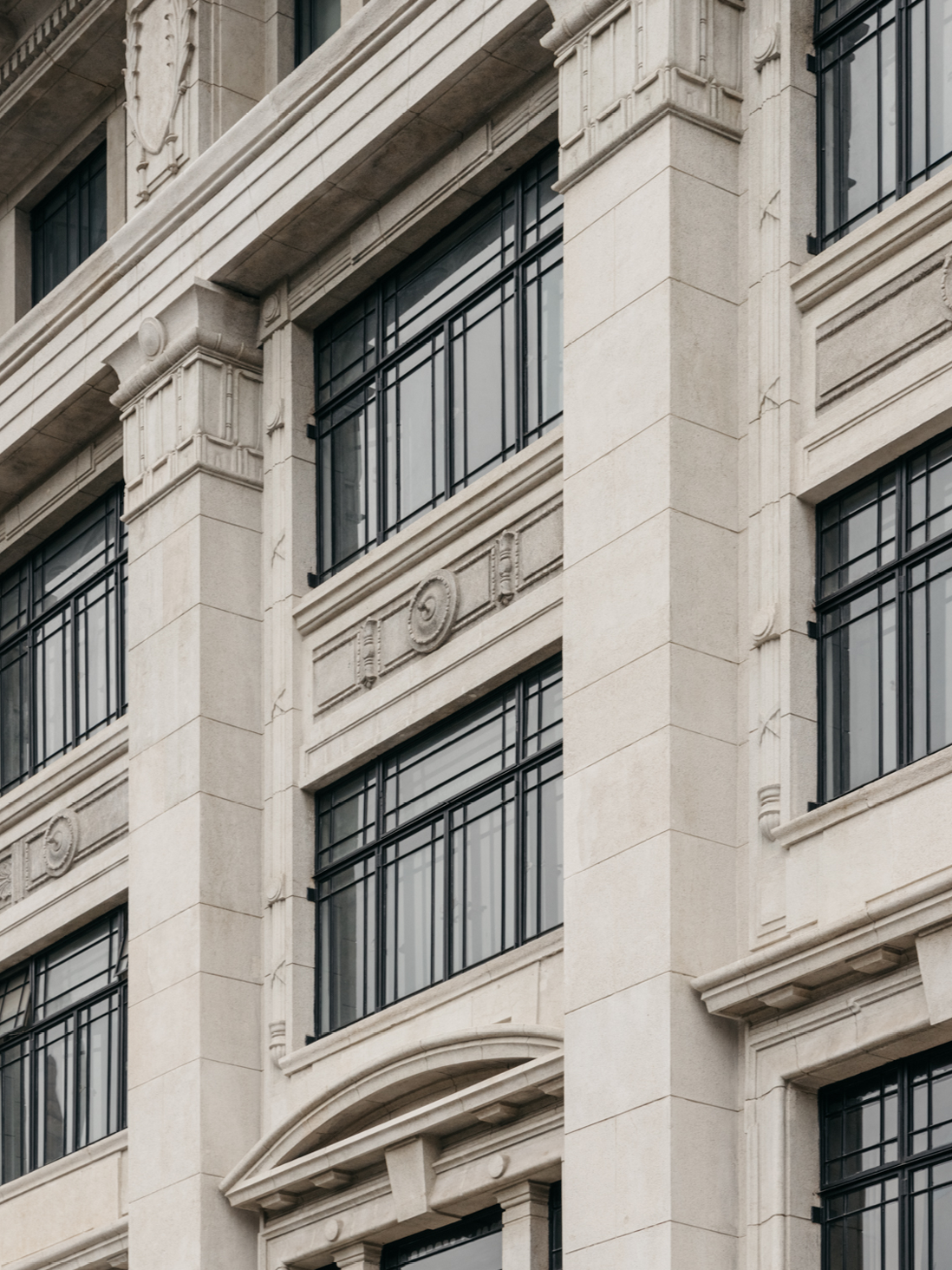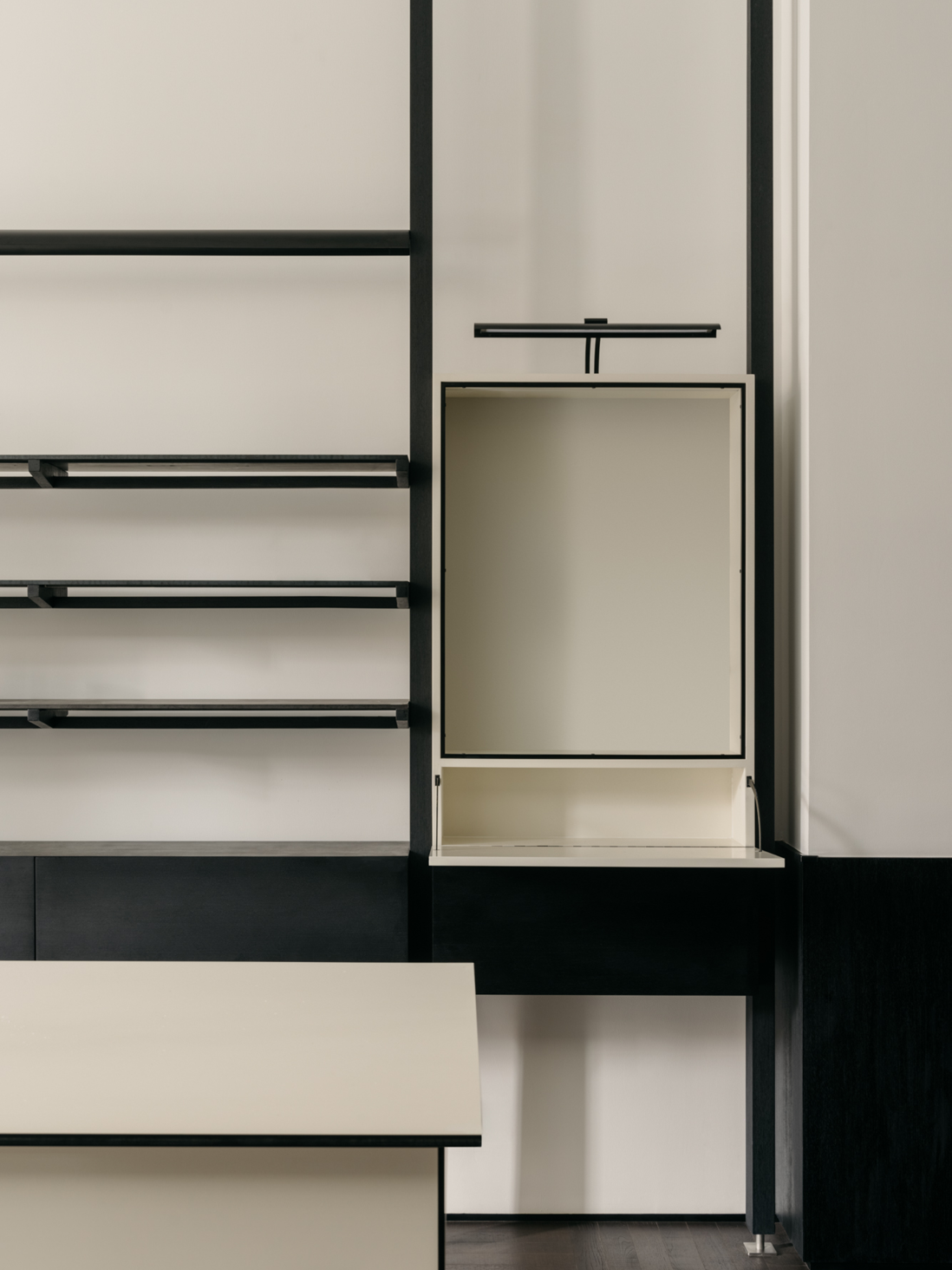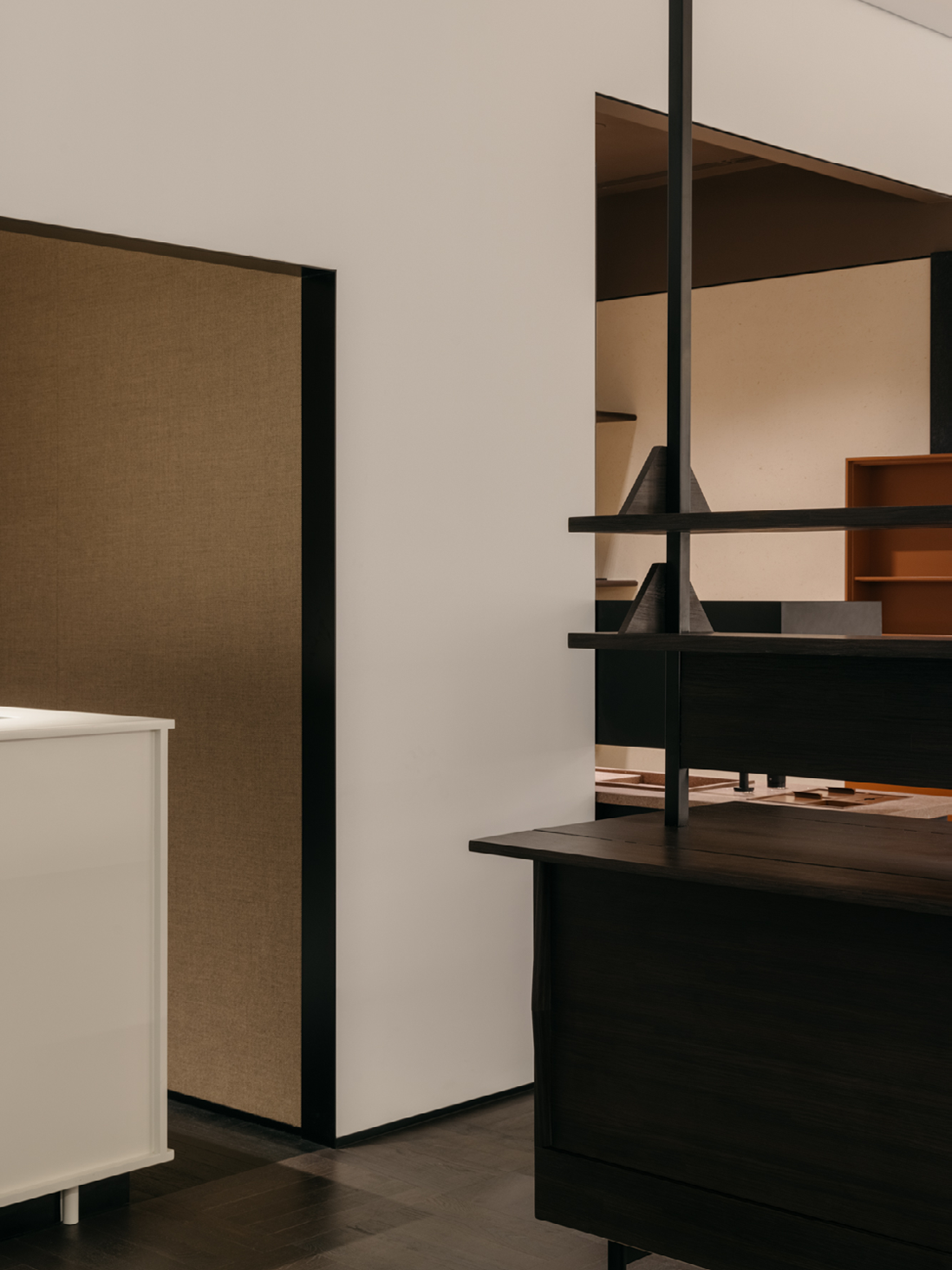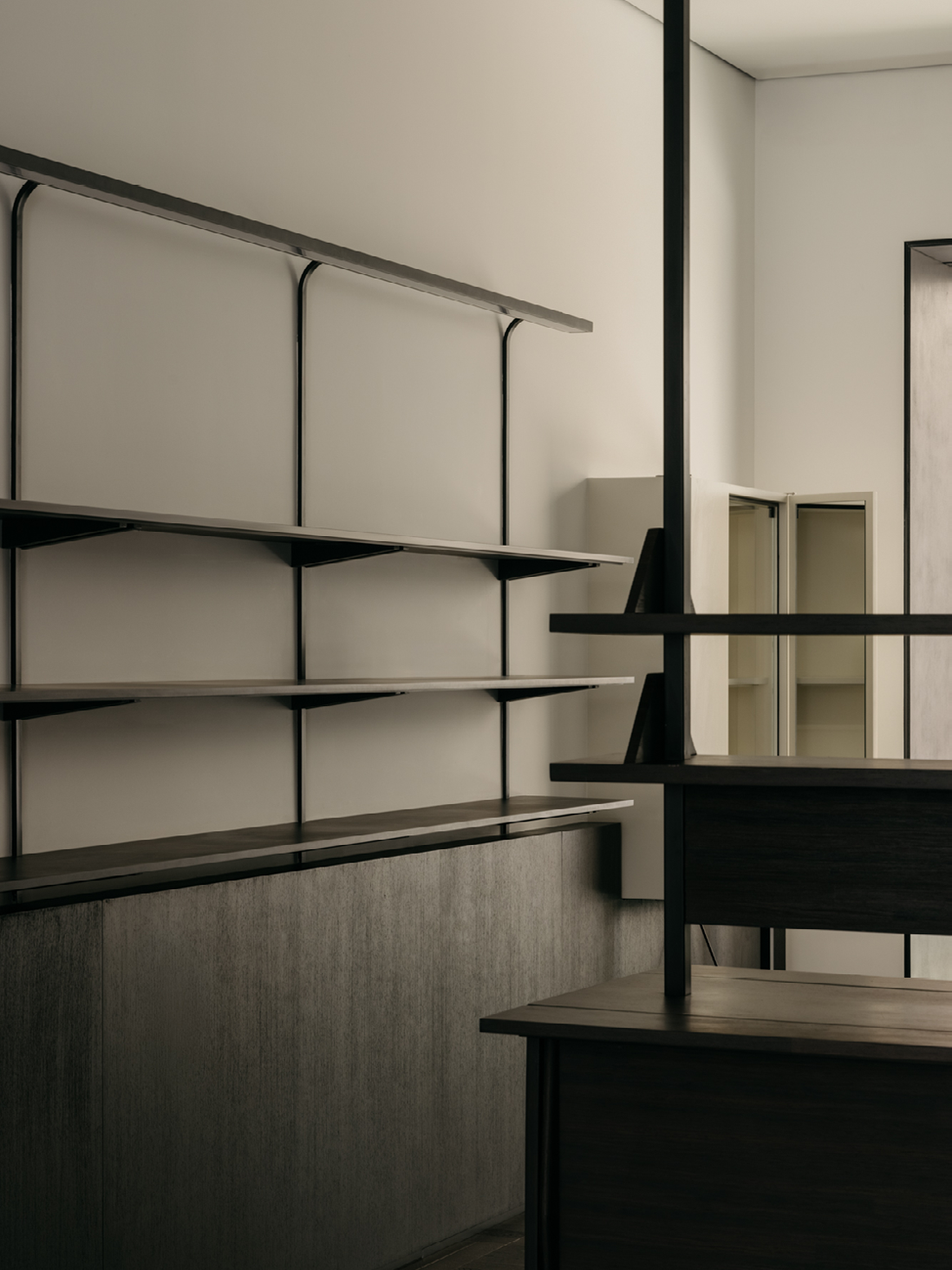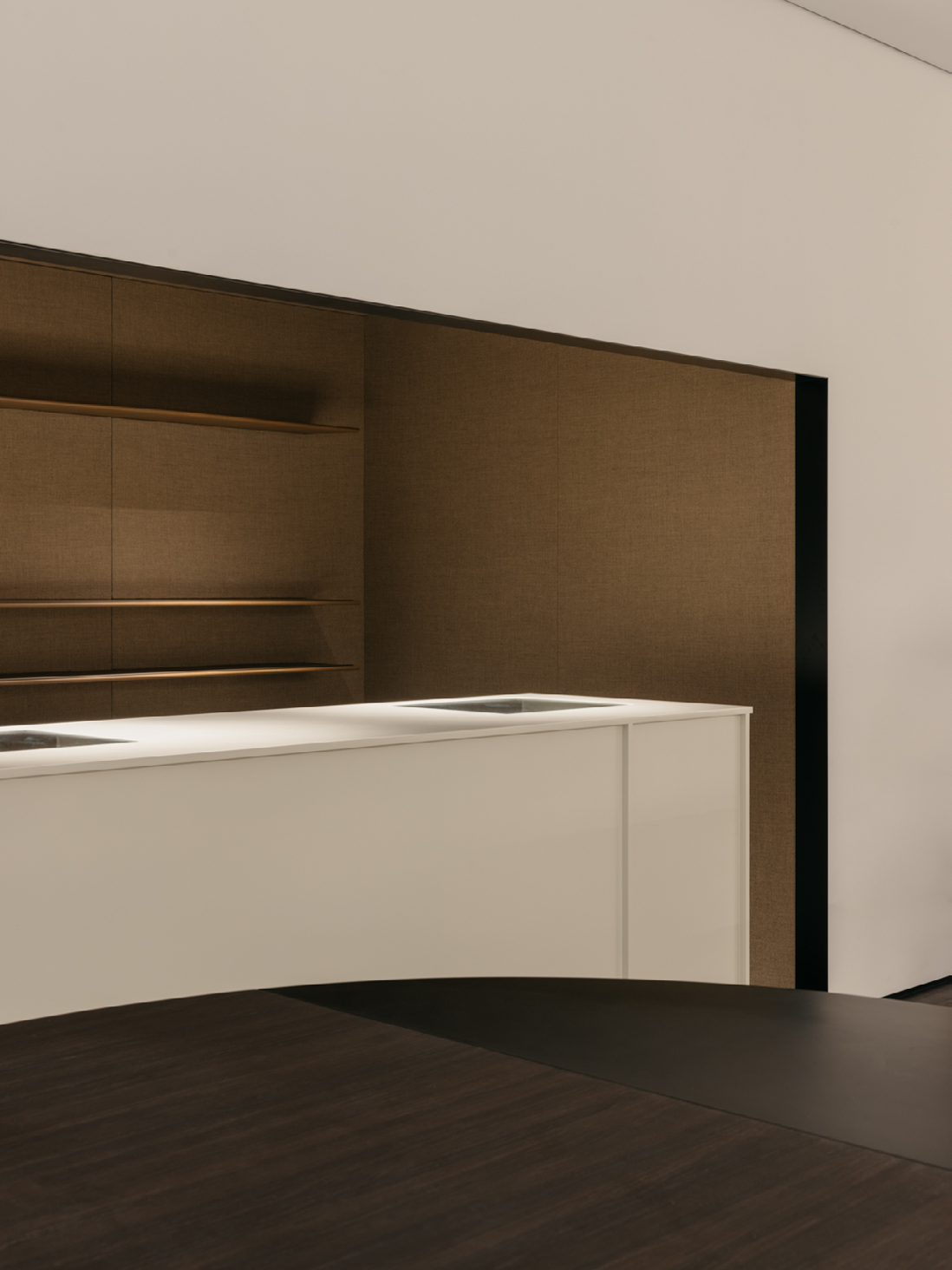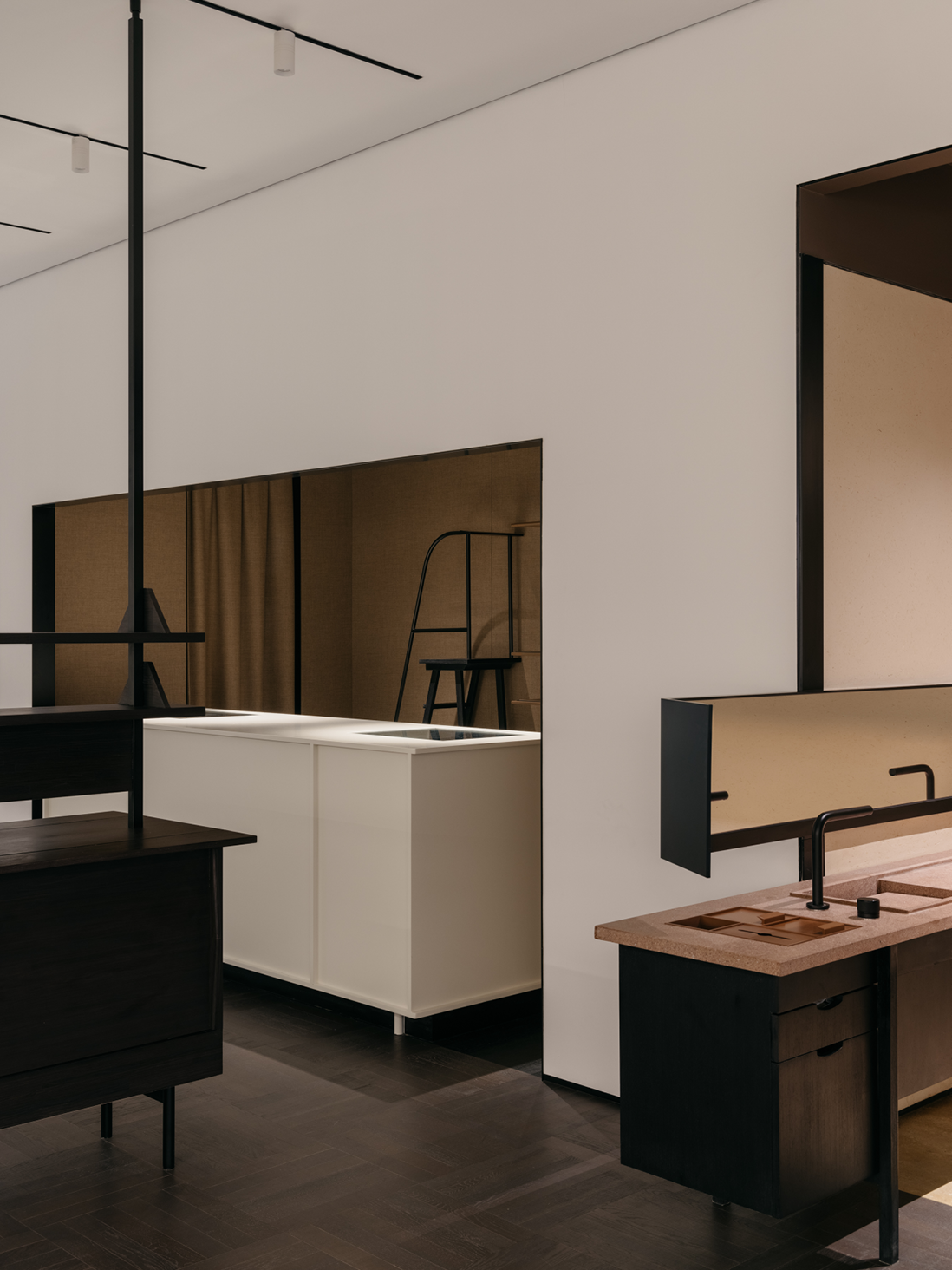To Summer The Bund
Location: Shanghai, China
Area: 150 sqm
Status: Complete
Completion: Jan 2024

Upon encountering the Hami Building, it became known that this site was once home to the old Xinwenhui Newspaper headquarters. The camera pulls back to a century ago, sparking our imagination about a ‘female writer’s study’. In the study, they were writers, editors, journalists, poets… creators of freedom and imagination.
For female creators of that era, a Woolf-style “room of one’s own” was both a physical and a spiritual sanctuary. As they began to write, their words transformed into time machines and portals, and paper became drawers and shrines housing their souls. Through writing, they were heard and seen by the world.
Every woman throughout her life experiences different “rooms”, but in that Woolf-style room of her own, she holds complete control over the lock—closing the door, she writes undisturbed; opening it, she can travel, wander, and experience a kaleidoscope of the world… Between opening and closing, a woman’s inward imagination and outward freedom are penned into limitless creation.
Writing leaves traces, as does scent, both of which can be followed. It might settle on the desk where one sits for long hours, freshly straightening manuscripts; inside a slightly ajar cabinet; in the corner of a drawer; or among the books on openly spaced shelves.
When we try to outline this room, the key terms extracted are “open and close”. This concept resembles an author’s daily action: opening a book, she enters an unbounded “home of the virtual world” filled with freedom and imagination; closing it, she returns to her real home. This home is both hidden and evident, concealed when others are present and revealed when alone, not fully exposing itself. “She” expresses herself through words and through the arrangement of her space.
Externally, we wish to present the sharpness and courage with which women face the world, confidently opening doors and even breaking through them with their physical bodies. Reflecting on Woolf’s mention of women’s difficulties in accessing libraries, we referenced the layout of 1930s public libraries, incorporating climbable ladders for retrieving books and leather benches for resting into the space.
Shanghai women of that era strove to survive, freeing themselves from shackles and toggling the “switch” between reality and imagination. Today, we still seek to continue the narrative of the golden age, serving as an epiphany: in any era, women should have ‘time’ and ‘space’ to explore themselves and the world.
